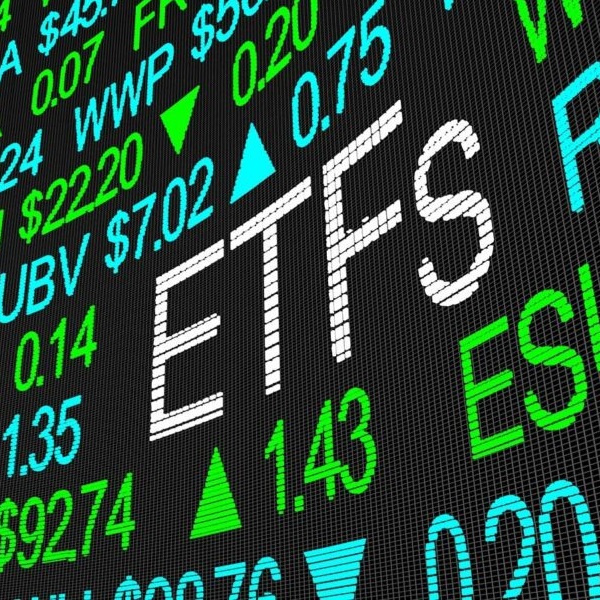
Global X drops U100 fee to 0.18% as investors rush to US tech investments
Global X has dropped the fee on a key US technology ETF as demand for US tech investments soars to record levels following Donald Trump’s election win, with Australians seeking to profit from the outperforming US stock market by buying US equity ETFs listed on the Australian Securities Exchange (ASX).
Analysis by Global X reveals that Australian investors have allocated $2.3 billion to Australian-listed ETFs tracking the US market since Trump’s election (that is between 1 November 2024 to 31 January 31, 2025).
“This marks the largest three-monthly net inflow into Australian-listed US equity ETFs on record, surpassing the previous high of $1.2 billion in October 2024,” said Billy Leung, senior investment strategist with Global X.
“In contrast, following Donald Trump’s election in 2016, only $50 million flowed into Australian-listed US equity ETFs, although this period was characterised by a more risk-averse market response as investors assessed the impact of his victory.
“Investors are keen to get exposure to the US market, especially after US equities experienced their best two-year run to 31 December 2024 in a quarter of a century. This momentum could run further in 2025, driven by US exceptionalism and the prospect of stronger earnings growth under a pro-markets Trump presidency,” Leung said.
Global X continues to strengthen its suite of US-focused ETF, and has enhanced their accessibility by reducing the management fee on the Global X US 100 ETF (ASX: U100) to 0.18% p.a. from 0.24% p.a..
“We are also listing more US focused ETFs on the ASX such as the new Global X Russell 2000 (ASX:RSSL), which provides exposure to 2000 small-cap stocks listed in the US as the share market rally broadens into smaller cap shares,” Leung said.
Overall, global share ETFs were the star performer in 2024, drawing over $16 billion in net flows, accounting for over half of ETF flows, up from 23% in 2023. US equities led the way, with US equity ETFs attracting a record $5 billion in net flows, double the previous high set in 2021.
“We hope the fee drop on U100 will help investors leverage the boom in US stock markets, with a core offering of exposure to 100 of the largest innovative companies listed on the US market on either the NASDAQ or NYSE. U100 focuses on technology and pioneering US companies, providing exposure to sectors with high growth potential. The ETF holds key companies including Apple, Microsoft, Nvidia, Meta, Alphabet and Salesforce, which have outperformed well in recent times.”
“The Nasdaq remains a vital hub for tech innovation; however, many pioneering companies are lifted on other exchanges, such as the NYSE. Over the past 12-months to 12 February 2025, Nasdaq-listed stocks posted a 24% total return, while NYSE names followed closely with 19%, underscoring that significant growth opportunities exist outside Nasdaq.
“Leading technology innovators like IBM and Oracle, as well as newer tech giants like Salesforce and ServiceNow, are established on the NYSE rather than the Nasdaq, reflecting their unique business paths and longstanding exchange commitments. This mix of longstanding and emerging leaders demonstrates that innovation is widely distributed on various stock exchanges, not just the Nasdaq,” Leung said.
Global X Australia has also reached a fresh milestone, surpassing $9 billion in assets under management in January 2025, with sights on $11 billion by the year’s end.
“We could reach $11 billion by the year’s end if the strong start to the year continues, with much of the money Australians are investing in ETFs expected to go into international equity and US ETFs and also portfolio staples such as gold, which have benefited significantly since Trump’s election, given the uncertainty his economic policies have introduced and their potentially deleterious impact on global trade and economic growth,” said Leung.
According to Leung, many Australian investors are still too heavily focused on local equities, including self-managed super funds (SMSFs). Their asset allocation highlights a stark neglect of offshore shares and US shares in particular, which outperformed Australian shares by 13 percentage points in 2024 and could similarly outperform in 2025.
Data from the Australian Taxation Office (ATO) reveals self-managed super funds (SMSFs) assets topped $1.024 trillion for the first time in the September quarter of 2024. A record $286.3 billion of this is invested in Australian shares (about 28% of total SMSF assets), but just $18.9 billion was invested in overseas shares.
“Considering the substantial assets under management by SMSFs, the current investment landscape underscores the potential benefits for SMSFs of adopting greater equity allocations to US and offshore equities, which they can easily do through ASX-listed ETFs, with Global X’s offering including plays on important themes such as AI, renewable energy and semiconductor stocks such as Nvidia,” Leung said.
SMSFs invested 16% of their total assets in direct property in the September quarter, while a record $161.7 billion was held in cash and term deposits (around 16% of total assets), the ATO data reveals.
Global X now has 42 ETFs in Australia, including Australia’s first dedicated artificial intelligence ETF (ASX: GXAI) and Australia’s only copper miners ETF (ASX: WIRE).


